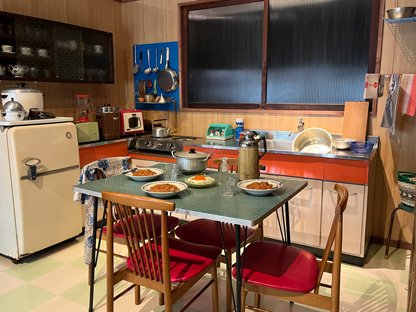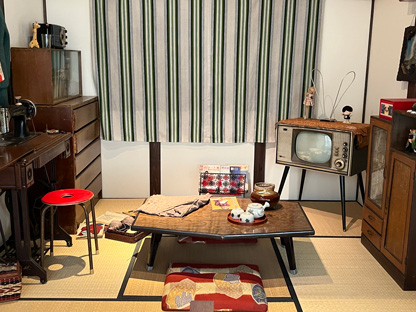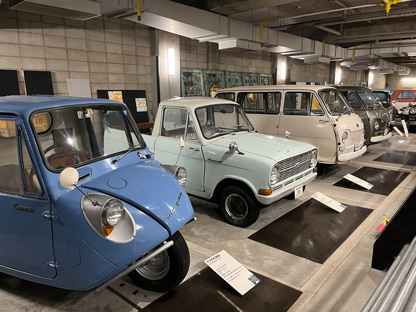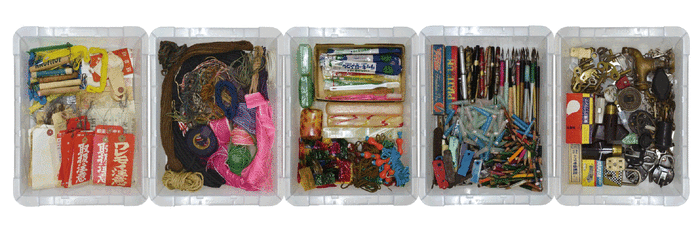About the museum
The Showa Era Lifestyle Museum - Overview
1. The Showa Era Lifestyle Museum’s Background and Purpose

Our museum opened in 1990 to collect and exhibit the materials concerning to the local history and culture. It was a typical style of local historical museum in Japan at that time.
While we engaged in the protection of historical and cultural materials in the community, in 1993, we started to collect the materials on daily life during the Showa period, especially focused on the time of Japan's economic growth after World War Second.

Our aim to collect the items on daily life on that time is to illustrate the changes in lifestyle in Japan. These changes included the spread of electrical appliances such as rice cookers, refrigerators, and washing machines, and they brought the changes on traditional domestic labors as well. For example, before washing machines, we washed our clothes by hand using washboards, and before rice cookers, rice was cooked over open fires in clay ovens. In other words, we aim to interpret the changes in our lives from the changes in the tools we used.

Through these museum activities, we aim to document, pass on and interpret the changes in daily life. And we offer visitors a place where they can reflect on the changes in their lives and think about their present and future lifestyles.
2. Collection Overview
We are attempting to document daily life in the Showa period with items that were used at the time, including small items, such as wrapping papers of candies, that would become trash. We are trying to collect exactly everything used in daily life.
Now we have a huge collection of objects of daily life, more than 160,000 items. The collection includes cars, electrical appliances, furniture, tableware, clothing, records, items concerning school life, toys, food packaging, and so on.
All of the collection is comprised of free donations from the community. Since the opening of the museum we have not had the budget to purchase any material. We have built our distinctive collection with the help of the community.

3. Reminiscence Project : An attempt to utilise museum collections for the elderly care
These materials of daily life are strongly connected to the memories of people living today, especially the elderly. Our museum allows visitors to interact with the exhibited materials through their own experiences and memories.
We are exploiting this characteristic of stimulating visitors' memories by promoting a reminiscence project in cooperation with the municipal department of welfare for the elderly. This is an effort to utilise materials from daily life in the Showa period for the care of the elderly in the community.
This initiative aims to enhance the physical and mental wellbeing of the elderly in the community by leveraging the resources of the museum.
4. Museum as a Place for Intergenerational Exchange

We provide the exhibitions on the life in the Showa period, and they bring visitors back to their memories through the objects on display. In addition to these exhibitions, we offer workshops and other activities related to the daily life of the Showa period. These programs aim to pass on the wisdom and skills of traditional lifestyles to the next generation and encourage interaction among various generations.
In these programs, we encourage the elderly to participate the workshops as participants and stuff members, and provide opportunities for all participants to share their memories with each other and pass them on to other generations.
To participate actively in these programs, the elderly maintain their physical and mental health by recalling memories and also play a social role in passing on traditions and memories to the next generation.


